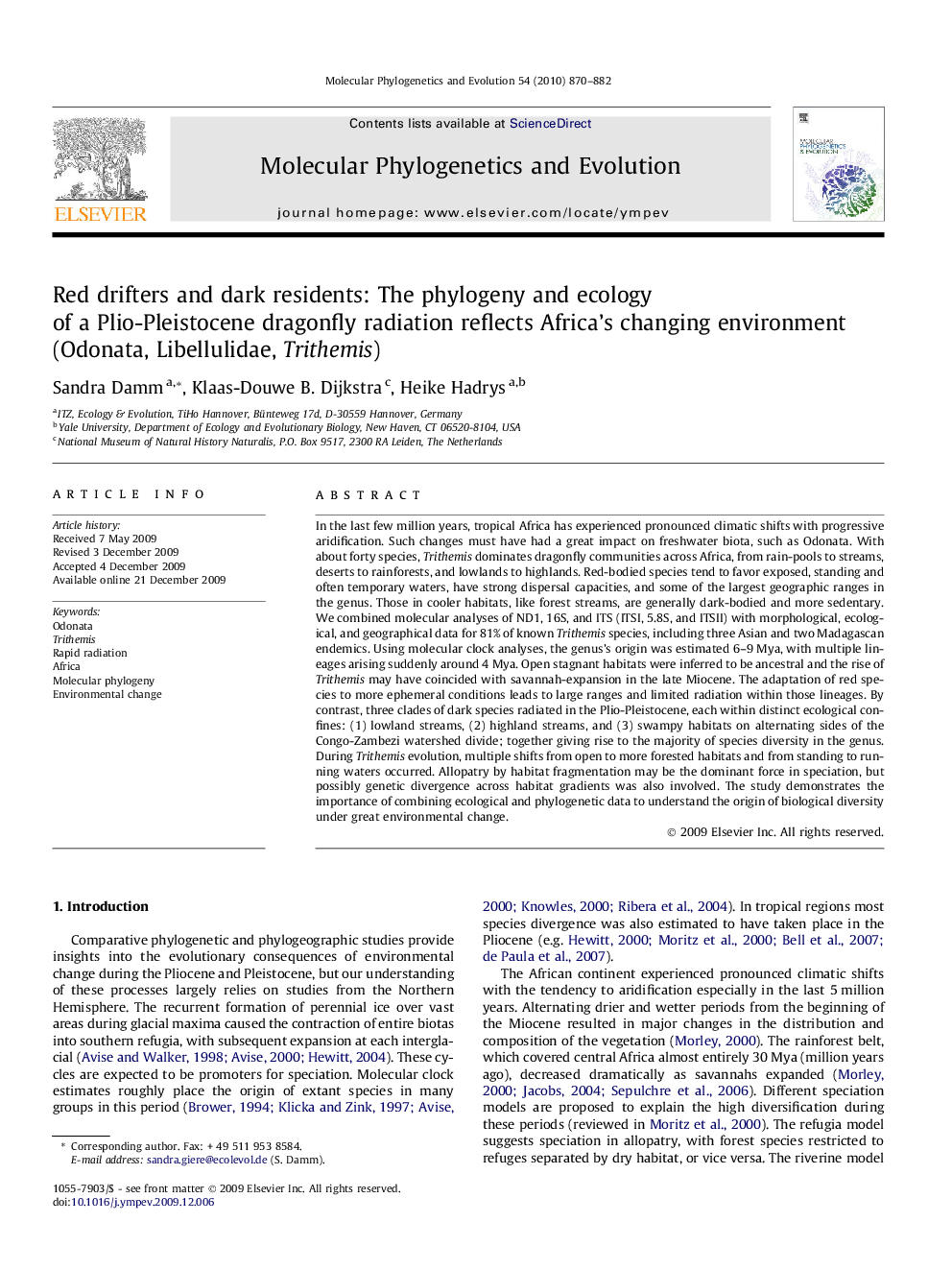| کد مقاله | کد نشریه | سال انتشار | مقاله انگلیسی | نسخه تمام متن |
|---|---|---|---|---|
| 2834875 | 1164325 | 2010 | 13 صفحه PDF | دانلود رایگان |

In the last few million years, tropical Africa has experienced pronounced climatic shifts with progressive aridification. Such changes must have had a great impact on freshwater biota, such as Odonata. With about forty species, Trithemis dominates dragonfly communities across Africa, from rain-pools to streams, deserts to rainforests, and lowlands to highlands. Red-bodied species tend to favor exposed, standing and often temporary waters, have strong dispersal capacities, and some of the largest geographic ranges in the genus. Those in cooler habitats, like forest streams, are generally dark-bodied and more sedentary. We combined molecular analyses of ND1, 16S, and ITS (ITSI, 5.8S, and ITSII) with morphological, ecological, and geographical data for 81% of known Trithemis species, including three Asian and two Madagascan endemics. Using molecular clock analyses, the genus’s origin was estimated 6–9 Mya, with multiple lineages arising suddenly around 4 Mya. Open stagnant habitats were inferred to be ancestral and the rise of Trithemis may have coincided with savannah-expansion in the late Miocene. The adaptation of red species to more ephemeral conditions leads to large ranges and limited radiation within those lineages. By contrast, three clades of dark species radiated in the Plio-Pleistocene, each within distinct ecological confines: (1) lowland streams, (2) highland streams, and (3) swampy habitats on alternating sides of the Congo-Zambezi watershed divide; together giving rise to the majority of species diversity in the genus. During Trithemis evolution, multiple shifts from open to more forested habitats and from standing to running waters occurred. Allopatry by habitat fragmentation may be the dominant force in speciation, but possibly genetic divergence across habitat gradients was also involved. The study demonstrates the importance of combining ecological and phylogenetic data to understand the origin of biological diversity under great environmental change.
Journal: Molecular Phylogenetics and Evolution - Volume 54, Issue 3, March 2010, Pages 870–882